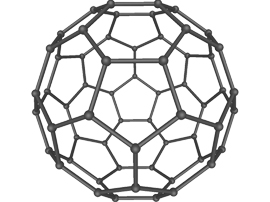Research that successfully uses nanotechnology to deliver a substance that helps regenerate ailing heart muscle tissue could be the next step in the field of regenerative medicine, which someday could be used to repair human hearts without surgery, says top heart doctor Dr. Chauncey Crandall.
“Regenerative medicine is a field where progress is happening. It’s the next generation of treatments,” said Dr. Crandall, who is chief of the cardiac transplant program at the world-renowned Palm Beach Cardiovascular Clinic in Palm Beach County, Florida.
Dr. Crandall was commenting on a recent study in the journal Science Translational Medicine in which researchers in Taiwan successfully used nanomaterials to repair cardiac tissue damaged in rats and pigs. They are hoping the same method can be used to regenerate damaged heart tissue in humans with heart failure.
Nanotechnology is the science of manipulating materials on a molecular level to create functional systems or devices on a microscopic level. This type of technology is currently being used in many ways in medicine, from the coating of drug stents to the targeted delivery of medications to organs that need it directly, as opposed to flooding the body with medication.
In this case, the researchers used nanotechnology to build a microscopic delivery system in which they delivered a protein called vascular endothelial growth factor, or VEGF, to promote blood-vessel growth in the heart. In the past, this method hadn’t worked because the heart’s blood circulation tended to rapidly wash away the VEGF. By using nanotechnology to deliver the VEGF directly to the heart’s tissue, the scientists avoided the problem of just infusing VEGF into the body, where it might have negative effects. “You don’t want to send VEFG to other organs because it could cause a cancer,” Dr. Crandall noted.
According to the researchers, their study showed as much as a 70 percent improvement in heart function, a three-fold improvement in the regeneration of microvessels and a five-fold increase the growth of new arteries.
The use of regenerative medicine in treating heart failure is of great interest. Right now, there are no approved methods of treating heart failure this way, and the standard way of treating this disease in its end stages is with heart transplant, a drastic measure that relies on donor hearts, of which there is a shortage.
Also, as deaths from heart attack decline, the number of cases of heart failure grows. In the U.S., about 785,000 people will have new heart attacks this year and 470,000 will suffer recurrent ones. It’s estimated that two-thirds of these patients don’t recover completely, and are vulnerable to complications, including heart failure.
Some experts in Taiwan heralded this research as a breakthrough, noting that progress in delivering VEGF to the heart had been at a standstill for a decade. However, Dr. Crandall was more circumspect, noting that there are many competing promising technologies in the field of regenerative medicine, such as stem cell research. And, although, the future of regenerative medicine as a whole is promising, Dr. Crandall noted, “We don’t need to wait for that –we can start rebuilding our own heart muscle and coronary arteries now with a heart healthy lifestyle.”
“Eating a plant-based diet and exercise, which means walking at least an hour a day, reverses heart disease and also helps build new collateral blood flow to the heart,” noted Dr. Crandall. “So why wait for medical science to do things we can do ourselves –I call this ‘macrotechnology,’” he added.

